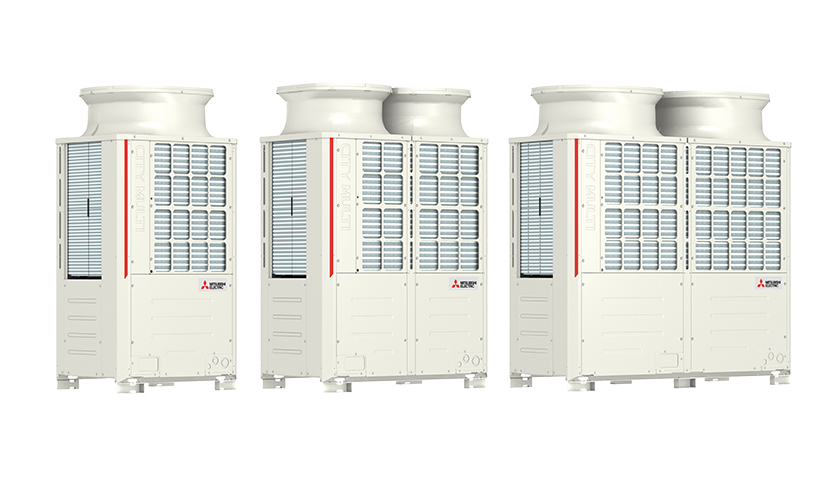Mitsubishi Electric has launched the UK’s first viable R32 solution for large-scale air conditioning with the new range of City Multi Hybrid VRF (Variable Refrigerant Flow) products. This brings all of the benefits of VRF air conditioning in R32 format to deliver a system with a significantly lower global warming potential (GWP) than existing solutions.
“There have already been over 500 Hybrid VRF systems installed across Europe since we launched five years ago and we believe this R32 version will increase the market share for this unique VRF solution,” explains Mark Grayston, Product Marketing Manager for the company’s air conditioning systems.
“Not only can Hybrid VRF help remove the need for leak detection, this R32 version delivers the low GWP benefits that customers are now searching for.”
As part of the F-Gas Regulations, the construction industry has been looking for air conditioning systems that deliver high operational efficiency whilst minimising the global warming potential of the refrigerants used within these systems. Hybrid VRF delivers a familiar, proven solution to offer businesses a commercially viable alternative to R410A systems.
Existing VRF units use R410A which has a GWP of 2,088, whilst the newly adopted refrigerant, R32 has a reduced GWP of 675, two-thirds less than R410A. Whilst several manufacturers have introduced R32 models in the room and packaged air conditioning range, no-one has yet introduced a UK model that provides a solution for large VRF systems … until now.
“We already have split air conditioning models on R32 and have introduced Hybrid VRF so that customers have a complete range of R32 solutions regardless of the building or situation,” adds Grayston. “Coupled with this is the rapid price rises of R410A month by month which places a strain on traditional VRF systems so we want to ensure that both customers and installers not only have an alternative, but also get the added benefit of increased performance and advanced controls.”
Hybrid VRF is suitable for almost any commercial building and has already been installed in a huge variety of applications from offices, hotels, residential accommodation, showrooms, care homes, public houses and much more, with the system delivering all the design and installation flexibility of traditional VRF with comfort levels normally associated with 4-pipe fan coil systems.
“We’ve seen particular growth in Hybrid VRF sales in both the office and hotel sectors and with this R32 version we have sought to answer one of the hottest topics in the UK air conditioning industry on how to tackle low GWP in larger systems,” adds Grayston. “Hybrid VRF is also designed to offer customers a future-proof solution that delivers advanced efficiency with improved corporate social responsibility.”
The Hybrid solution is fundamentally different from traditional VRF systems as it uses water throughout the majority of the pipework to transfer simultaneous heating and cooling to different rooms yet still offers two-pipe heat recovery, lower annual maintenance costs and the full flexibility of design, operation and advanced controllability that the company’s systems are synonymous for.
At the heart of the new system is an HBC (Hybrid Branch Controller) box, which is connected to the outdoor unit via traditional refrigerant piping. Between the HBC box and the indoor fan coils, the system uses water piping but still offers high sensible cooling and stable room temperatures for maximum comfort.
“Legislation is also now demanding that leak detection equipment is installed alongside VRF air conditioning when it is used in occupied spaces and this calls for additional equipment costs and added risk, as well higher maintenance bills”, explains Grayston. “This new system does away with the need for leak detection whilst also delivering higher sensible cooling throughout the building”.
For other applications where leak detection is not needed, Hybrid VRF delivers comfortable off-coil temperatures, allowing even more buildings to take advantage of manageable phased installation through the system’s modular design.


